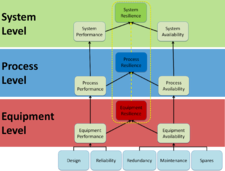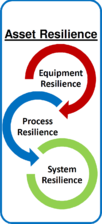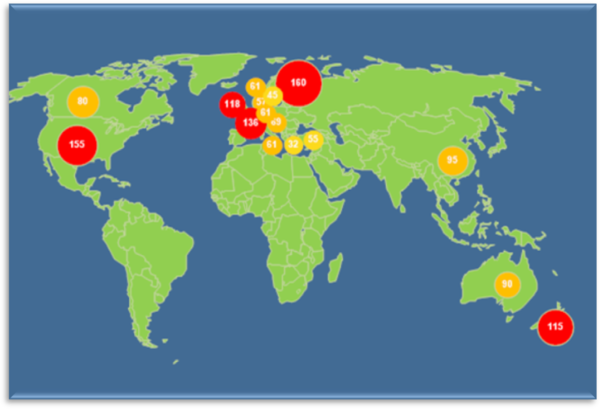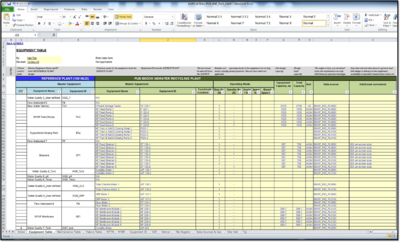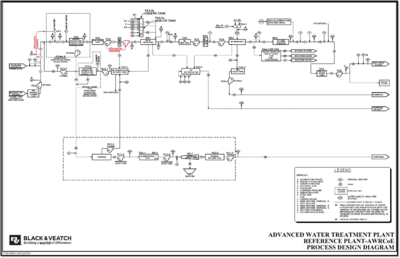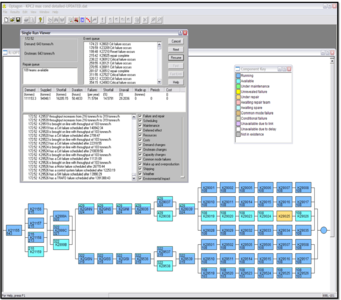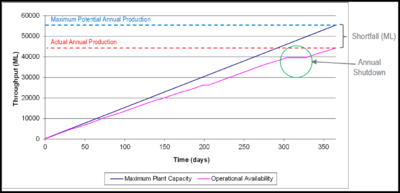Membrane Autopsy Techniques
From Desal Wiki
Contents
Purpose
- Resilience is a system’s ability to maintain routine function even under unexpected circumstances.It is an essential factor in ensuring continuous process throughput whilst remaining compliant with strict water discharge guidelines.
- Resilience modelling tools have been widely used in the Petrochemical, Oil and Gas, and Aviation industries to model process reliability and safety over the last 15 years.
- No standard resilience modelling method has been developed for a potable reuse scheme.
- Study used a resilience modelling tool from the Oil and Gas industry, GL Noble Denton’s (GLND) OPTAGON Simulation Package
- OPTAGON is GLND’s Monte Carlo-based Reliability, Availability and Maintainability (RAM) simulation tool which is capable of modelling the performance of asset.
- With user-variated real-time data, OPTAGON is able to accurately predict equipment failure and system resilience.
Objective
- Develop a mechanical resilience model for dual membrane plants (MF/UF + RO) using data from large scale (>10 MLD) plants with long operating history (7-10 yrs)
- Develop “What-if” scenarios for resilience model’s sensitivity based on confirmed cases of drinking water plant failure resulting in pathogen infection
- Quantify process resilience and predict process equipment failure using resilience model.
Common Failures in Drinking Water Systems
- GIDEON database catalogued >2000 confirmed pathogenic outbreaks from 2003 to 2013.
- 30% of the outbreaks were associated with protozoan parasites.
- The most common type of failure was an incident in the catchment area in conjunction with an inadequate process design.
- Second most common type of failure occurred in the distribution system followed by an inadequate management framework and operational error.
- Poor asset management and failures highlight the need and importance of resilience modelling in the water industry.
Supporting Evidence
Modelling Process
Data Sourcing and Collection
- Equipment failure and performance data is sourced from 7 water recycling plants worldwide.
- Relevant information is collected from a wide array of data sources.
Data Analysis and Mapping
- Cataloged equipment data is sorted and mapped according to process equipment specified in the model (Reference Plant).
- Equipment arranged with design and operational capacities based on functional location.
- Operation & Maintenance (O&M) Manuals provide vital information on equipment availability.
- MTBF and MTTR are also calculated if not previously provided.
- Equipment criticality is determined based on failure and maintenance data.
Resilience Modelling and Sensitivity Analysis
- Mapped data becomes input variables for OPTAGON to model asset’s mechanical resilience.
- Monte Carlo simulations of 10,000 realisations ensure confidence of modelling results.
- Results also demonstrate equipment interdependency.
- Modelling results would quantify the asset’s overall reliability and resilience.
- Sensitivity analysis would further highlight which input variable would have the greatest impact on the system.
- “What-if” scenarios would test the robustness of the reference plant and aid with process optimisation.
Resilience = ƒ (Availability, Performance)
Availability = ƒ (Reliability, Maintainability)
Risk = ƒ (Likelihood, Consequence)
Outputs
- OPTAGON can model complex water recycling systems with high level of accuracy and consistency.
- Modelling results would be able to quantify asset resilience, criticality and risk.
- Resilience modelling can predict and improve asset performance throughout asset’s lifespan.
- Sensitivity analysis would support asset management decisions and aid in efficiency and profitability.
- Reference model can also be used to provide insight to specific failure modes and resulting effects.
